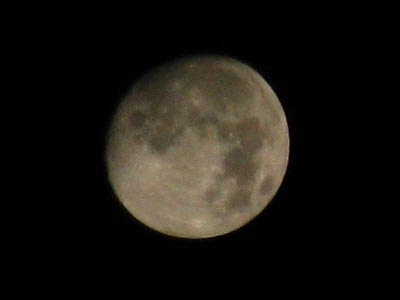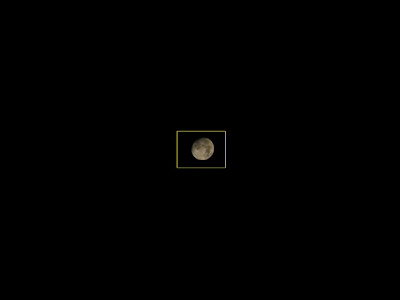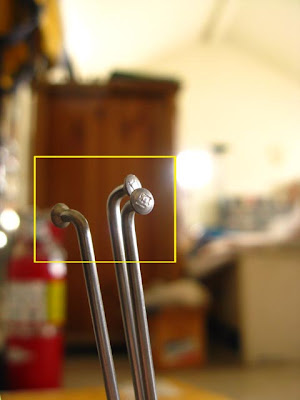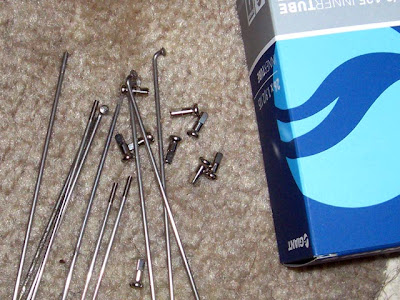I have a pretty cheap digital camera that’s enough to keep me happy. Officially, it’s a Canon A720 IS, available for about $200 if you look. You can spend a lot more on a fancier camera. Canon makes one or two cheaper cameras in the same line, and some more expensive variations of more or less the same thing before you get to their next tier of more fancy equipment.
I got this camera a couple of months ago because on my old camera I felt the automatic focus was no longer working perfectly, and there were a couple of dust spots that showed up consistently in every frame, and after traveling many hard roads with me the camera had been dropped enough times that it didn’t always know whether a picture was taken horizontally or vertically. The old camera still works, mostly. But it was nice to have the new one.
The new camera has a 6x zoom instead of a 3x zoom like the old one did. (That’s the optical zoom, not the digital zoom that goes beyond the optical.) The new camera takes pictures that are 3,264 x 2,448 pixels (8 megapixel); the old camera’s pictures were 2,272 x 1,704 (4 megapixel). That means that in a picture of the same size, there’s more detail. That means I can crop the picture tighter (to put online) or print it larger, with less graininess showing. When you combine the better zoom with the higher resolution image, you can grab a picture with much better detail from far off.
Properly working autofocus helps too, plus this camera has “image stabilization,” which means that if the camera moves slightly as I take a picture, it’s supposed to correct some of the blur. That should also be helping with sharp, clear details. I’m not sure how often it really adds anything.
Other than that, the new camera is very similar to the old one (which was also a Canon—I was happy with it, except that someone had mistreated it too often). When I compare pictures from the new to pictures from the old, I see exactly the difference suggested above: better detail in pictures. Sometimes the difference is dramatic.
Me, personally, I like a camera that runs on AA batteries. You can get ’em anywhere, and I have a few sets of rechargeables. Other people have other needs. You can find almost the identical feature set on other cameras (including a Canon line) that do not use AA cells. I specifically picked the camera that uses AAs.
I’ll mention in passing that this camera has a nice big screen on the back of it to let you see what you’re pointing at, or what picture you just took. I have seen cameras that take “better” pictures but have smaller view screens on the backs of them. That makes it really hard to tell whether you’re getting any worthwhile pictures when you’re on the road.
Other brands will offer similar features, and I’ve got nothing against other brands. Push comes to shove, I’d probably recommend getting at least 6-megapixel resolution, and the best optical zoom you can. (Ignore the digital zoom; it makes things bigger but grainier.) The one other note I’d insert is that when you’re in a hurry to snap a quick shot before it disappears, you sure do resent a camera that takes a few seconds to open up and be ready, as my Canon does. On the whole, though, I’m happy.
Technology is pretty good at replicating sound. It’s not perfect, but we can make pretty accurate reproductions of what something sounded like.
Technology has not caught up to the capabilities of human eyeballs. The eye is able to spot finer detail than a camera can (digital or film), and the eye adjusts better and faster to variations in brightness. Digital cameras have improved on the abilities of old film cameras, but they’ve still got a few generations of improvements before they capture things as naturally as our eyes do.
This is why you have to think a little, sometimes, when you’re taking a picture. Cameras give you automatic settings, but they also give you tools you can use to make up for the shortcomings of the automatic assumptions. Sometimes it’s as simple as knowing when to turn off the flash to catch a silhouette or the warmth of natural light. Sometimes you go a little further.
Beyond camera settings, I’m also not shy about accommodating further after the picture is taken, to make a thing look like what I saw. (I’m not proud either: Sometimes the camera shows me something better than what I was hoping to catch.)
 This was a picture I took (and posted) a few days ago. Better moon shot than my old camera could do. What I did not point out then was that this is the absolute limit my camera can reach with the optical zoom. Unlike most pictures I put up here, you can’t enlarge this any further. Here’s what the original frame looked like:
This was a picture I took (and posted) a few days ago. Better moon shot than my old camera could do. What I did not point out then was that this is the absolute limit my camera can reach with the optical zoom. Unlike most pictures I put up here, you can’t enlarge this any further. Here’s what the original frame looked like: My camera has a 6x zoom and an 8-megapixel image resolution. It’s easy to find cameras with better lenses (10x zoom or 12x zoom) and higher image resolution (12 MP or 18 MP). You spend a little more. And, if your settings are right, you get better detail when you take pictures of the moon. (Note that to get this image I had to tell the camera to take the picture at a faster shutter speed than it wanted to use.)
My camera has a 6x zoom and an 8-megapixel image resolution. It’s easy to find cameras with better lenses (10x zoom or 12x zoom) and higher image resolution (12 MP or 18 MP). You spend a little more. And, if your settings are right, you get better detail when you take pictures of the moon. (Note that to get this image I had to tell the camera to take the picture at a faster shutter speed than it wanted to use.) Here’s another recent example of tweaking a picture after I took it. Again, taking this picture at maximum (optical) zoom, there was a lot in the frame that wasn’t adding anything to the picture, so I lopped out what wasn’t helping. And then, for better or worse, I adjusted the color slightly, so the island would show up a little better. It made the water a richer blue, which maybe was aesthetically pleasing too:
Here’s another recent example of tweaking a picture after I took it. Again, taking this picture at maximum (optical) zoom, there was a lot in the frame that wasn’t adding anything to the picture, so I lopped out what wasn’t helping. And then, for better or worse, I adjusted the color slightly, so the island would show up a little better. It made the water a richer blue, which maybe was aesthetically pleasing too:
One more example:
 I actually kinda like the overall picture, with all the foreshortening from the forced angle, but there’s a lot of distraction in the frame (is that a fire extinguisher?), and what fascinated me was the detail in the stamping on the ends of the spokes. (That’s what they are.) This is a 19th-century technology refined down to be the most efficient solution for a particular need. You glance at a wheel and see spokes, and all you notice is they’re a bunch of wires, but they really show exquisite craftsmanship at a detailed level.
I actually kinda like the overall picture, with all the foreshortening from the forced angle, but there’s a lot of distraction in the frame (is that a fire extinguisher?), and what fascinated me was the detail in the stamping on the ends of the spokes. (That’s what they are.) This is a 19th-century technology refined down to be the most efficient solution for a particular need. You glance at a wheel and see spokes, and all you notice is they’re a bunch of wires, but they really show exquisite craftsmanship at a detailed level.Also, I had just (accidentally) figured out how to correctly use the macro focus feature on the new camera. 21st-century technology let me grab images of the finest the 19th century had to offer. But then to call out the part I liked, I cropped out all the extraneous stuff from the frame. (This is all done on the computer, after the picture is already taken.) You end up with a simpler, cleaner shot that really pops out what I’m excited about:

There’s nothing terribly interesting or photogenic about spokes. It would be easy enough to let the camera make all the calls, and end up with a picture like this:
 You pretty much know going in that you’re not going to end up with an Ansel Adams lithograph. And nine times out of ten, you’re going to end up using the camera’s automatic settings, either because they’re good enough or because you don’t have time to set up anything more crafty. But a tiny bit of advance thought every now and then might make a picture tell your story a little better.
You pretty much know going in that you’re not going to end up with an Ansel Adams lithograph. And nine times out of ten, you’re going to end up using the camera’s automatic settings, either because they’re good enough or because you don’t have time to set up anything more crafty. But a tiny bit of advance thought every now and then might make a picture tell your story a little better.Stretching to try something new on one in ten pictures, even on throwaway shots, also is a good way to learn what the camera can do, so that when you run across a more meaningful shot that ought to be treated the same way, you know how to get there.
1 comment:
Thank you. You answered all my questions. I like the silhouetted spokes (or however they are spelled).
Sometimes the picture setting is too dark and I have to push my nose up on the screen and look through the viewfinder to make sure I am getting what I want. The flash fixes the too dark part. How old fashioned is that? And now I have nose smudges on my viewing screen. Those are big smudges!!
Post a Comment